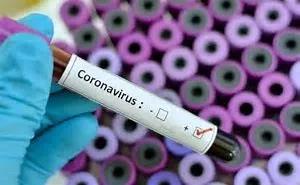|
“新型冠状病毒肺炎”,简称为“新冠肺炎”。英文名为“Novel coronavirus pneumonia”,简称为“NCP”。也一定是英语的重要考点之一,下面是小编给大家整理的新型冠状病毒初中英语考点预测,趁着在家没事,抓紧掌握,考试不愁!  novel 新型的 常常以“小说”的意思出现,但novel还常用作形容词,表示“新的、新奇的”。 剑桥辞典给出的定义是:  "new and original, not like anything seen before" "新的、原始的,和以往见过的都不一样" 这次新型冠状病毒,也是人类历史上没有过的,和以往的非典、埃博拉都不一样,所以是novel。  coronavirus 冠状病毒 这个词梨子在猪年的最后一篇文章里介绍过了,今天再来复习一下。 coronavirus是个复合词,是由两个名词corona和virus合成。 virus:n. [‘vaɪrəs] 病毒 corona:[kə’rəʊnə] 有“冠冕”、“花冠”的意思 故coronavirus是冠状病毒。  pneumonia 肺炎 [njuː'məʊnɪə] pneumon-:在拉丁语里指我们的肺,lungs -ia:病理性的状况 从专业上来讲,“肺炎”最正确的术语应该是pneumonitis,后缀“-itis”表示炎症。 但不知道为什么被传成了pneumonia并被广泛使用。 Novel coronavirus pneumonia或NCP,就是这次对我们无情下手的新冠肺炎。  17年前,在非典爆发后的第三个月,WHO世界卫生组织将非典命名为“SARS”,severe acute respiratory syndrome,严重急性呼吸综合征。 severe: 严峻的,严厉的,剧烈的 acute: 急性的 respiratory: 呼吸的 syndrome:综合症,症候群 引发非典的冠状病毒被写为“SARS-CoV”,这次的新冠状病毒被写为“2019-nCoV”,不知道之后是否会根据NCP做修改。 (“Co”指corona,“V”指virus) 【知识点】 冠状病毒(coronavirus)是一类主要引起呼吸道、肠道疾病(respiratory and intestinal diseases)的病原体。这类病毒颗粒的表面有许多规则排列的突起(a fringe of bulbous surface projections ),整个病毒颗粒就像一顶帝王的皇冠(royal crown),因此得名“冠状病毒”。冠状病毒除人类以外,还可感染猪、牛、猫、犬、貂、骆驼、蝙蝠、老鼠、刺猬等多种哺乳动物以及多种鸟类(mammals and birds)。 【关于新型冠状病毒】 2019-nCoV, as it's been labelled, is understood to be a new strain of coronavirus that has not previously been identified in humans. 这种新型冠状病毒(2019-nCoV)此前未在人类身上发现过。 Coronaviruses are a broad family of viruses, but only six (the new one would make it seven) are known to infect people. 冠状病毒是一个庞大的病毒家族,目前已知会感染人类的有六种(新发现的这种是第七种)。 【相关词汇】 新型冠状病毒 novel coronavirus / new strain of coronavirus 呼吸道疾病 respiratory diseases 禽流感病毒 avian influenza virus 密切接触者 close contacts 潜伏期 incubation period 疑似病例 suspected case 确诊病例 confirmed case 得肺炎 get/catch pneumonia 接受医学观察 under medical observation 流行病学调查 epidemiological investigation 病毒爆发 virus outbreak 遏制疫情爆发 contain the outbreak 严格隔离政策 strict isolation policy 携带病毒 carrying the virus 超级传染源 superspreader 医疗费用报销 reimbursement for medical expenses 中国大部分地区口罩供应紧张 tight supplies in large areas of China 人传人 human-to-human transmission 医务人员感染 infection of medical worker 【相关报道】 Scientists believe an animal source is "the most likely primary source" but that some human-to-human transmission has occurred. 科学家认为动物是“最有可能的初始感染源”,不过,也有一些人传人的病例。 Signs of infection include respiratory symptoms, fever, cough, shortness of breath and breathing difficulties. 感染症状包括:呼吸道症状,发烧,咳嗽,呼吸短促,呼吸困难等。 近期,湖北省武汉市等多个地区发生新型冠状病毒感染的肺炎疫情。 【阅读理解】 A new Chinese coronavirus, a cousin of the SARS virus, has infected more than 1000 people since the outbreak (爆发) began in Wuhan, China, in December. Scientist Leo Poon, who first decoded the virus, thinks it likely started in an animal and spread to humans. "What we know is it causes pneumonia (肺炎) and then doesn't respond to antibiotic(抗生素) treatment, which is not surprising, but then in terms of mortality (死亡率), SARS kills 10% of the individuals," Poon, a virologist(病毒学家) at the School of Public Health at The University of Hong Kong, said. The World Health Organization offered guidance to countries on how they can prepare for it, including how to monitor for the sick and how to treat patients. Here are seven things you should know about a coronavirus. What is a coronavirus Coronaviruses are a large group of viruses that are common among animals. In rare cases, they are what scientists call zoonotic[ˌzəʊəˈnəʊtɪk](人畜共患病), meaning they can be transmitted from animals to humans, according to the US Centers for Disease Control and Prevention. Coronavirus symptoms(症状) The viruses can make people sick, usually with a mild(轻度) to moderate(中度) upper respiratory tract illness(上呼吸道疾病), similar to a common cold. Coronavirus symptoms include a runny nose, cough, sore throat, possibly a headache and maybe a fever, which can last for a couple of days. For those with a weakened immune system, the elderly and the very young, there's a chance the virus could cause a lower, and much more serious, respiratory tract illness like a pneumonia or bronchitis [brɒŋˈkaɪtɪs](支气管炎). There are a handful of human coronaviruses that are known to be deadly. Middle East Respiratory Syndrome(中东呼吸综合征), also known as the MERS virus, was first reported in the Middle East in 2012 and also causes respiratory problems, but those symptoms are much more severe. Three to four out of every 10 patients infected with MERS died, according to the CDC. Severe Acute Respiratory Syndrome(严重急性呼吸综合征), also known as SARS, is the other coronavirus that can cause more severe symptoms. First identified in the Guangdong province in southern China, according to the WHO, it causes respiratory problems but can also cause diarrhea [ˌdaɪəˈriə](腹泻), fatigue (疲劳), shortness of breath, respiratory distress (呼吸窘迫) and kidney failure (肾衰). Depending on the patient's age, the death rate with SARS ranged from 0-50% of the cases, with older people being the most vulnerable. How it spreads Viruses can spread from human contact with animals. Scientists think MERS started in camels, according to the WHO. With SARS, scientists suspected civet cats (狸猫) were to blame. When it comes to human-to-human transmission of the viruses, often it happens when someone comes into contact with the infected person's secretions [sɪˈkriːʃ(ə)n](分泌物). Depending on how virulent [ˈvɪrələnt] (有毒的)the virus is, a cough, sneeze or handshake could cause exposure. The virus can also be transmitted by touching something an infected person has touched and then touching your mouth, nose or eyes. Caregivers (护理人员) can sometimes be exposed by handling a patient's waste, according to the CDC. 文章翻译 一种新的中国冠状病毒,是SARS病毒的一个堂兄弟,自去年12月在中国武汉爆发以来,已经感染了1000多人。科学家LeoPoon首先破译了这种病毒,他认为它很可能是从动物身上开始传播到人类身上的。香港大学医学院公共卫生学院的病毒学专家Poon说:“我们知道这会导致肺炎(PoT),然后对抗生素治疗无效,这并不奇怪,但就死亡率而言,SARS杀死了10%的个体。” 世界卫生组织向各国提供了如何做好准备的指导,包括如何监测病人和如何治疗病人。 关于冠状病毒你应该知道七件事。 什么是冠状病毒 冠状病毒是一大类常见于动物的病毒。据美国疾病控制和预防中心称,在极少数情况下,它们是科学家所称的人畜共患疾病,也就是说它们可以从动物传染给人类。 冠状病毒症状 这种病毒能使人生病,通常是轻微(或中度)上呼吸道疾病,类似于普通感冒。冠状病毒的症状包括流鼻涕、咳嗽、喉咙痛,可能是头痛,也可能是发烧,持续几天。对于那些免疫系统弱的人,老年人和非常年轻的人来说,病毒有可能引起一种较低、更严重的呼吸道疾病,如肺炎或支气管炎。 有一些人类冠状病毒已知是致命的。 中东呼吸综合征(Middle East Respiratory Syndrome,简称MERS病毒)于2012年在中东首次报道,也会引起呼吸系统问题,但这些症状要严重得多。疾控中心称,每10名感染MERS的患者中就有3至4人死亡。 严重急性呼吸综合征(Severe Acute Respiratory Syndrome,简称SARS)是另一种能引起更严重症状的冠状病毒。据世卫组织称,首次发现于中国南方的广东省,它会引起呼吸系统问题,但也会引起腹泻、疲劳、呼吸急促、呼吸窘迫和肾衰竭。根据病人的年龄,SARS的死亡率在0-50%之间,其中老年人最易感染。 如何传播 病毒可以从人类与动物的接触中传播。据世界卫生组织称,科学家认为,MERS是从骆驼开始的。对于非典,科学家们怀疑是麝香猫引起的。当涉及到人与人之间的病毒传播时,通常发生在有人接触到受感染者的分泌物时。 根据病毒的毒力,咳嗽、打喷嚏或握手都可能导致暴露。这种病毒也可以通过触摸被感染者触摸过的东西,然后触摸你的嘴、鼻子或眼睛来传播。根据疾病预防控制中心(CDC)的说法,医务人员有时可以通过处理病人的废物来暴露自己。 本文内容综合来源网络,编辑,如有侵权,请及时联系删除。 (责任编辑:admin) |
